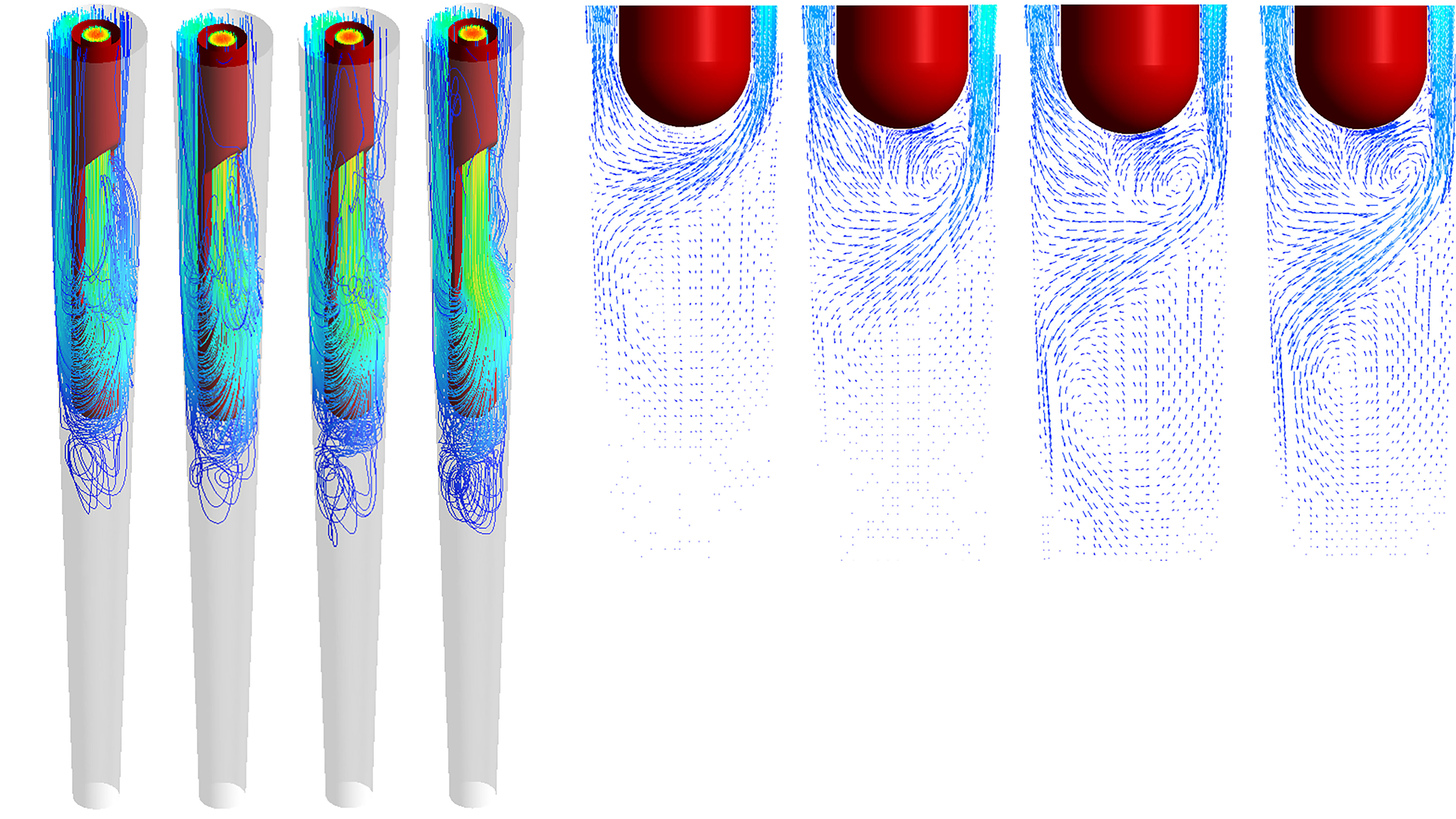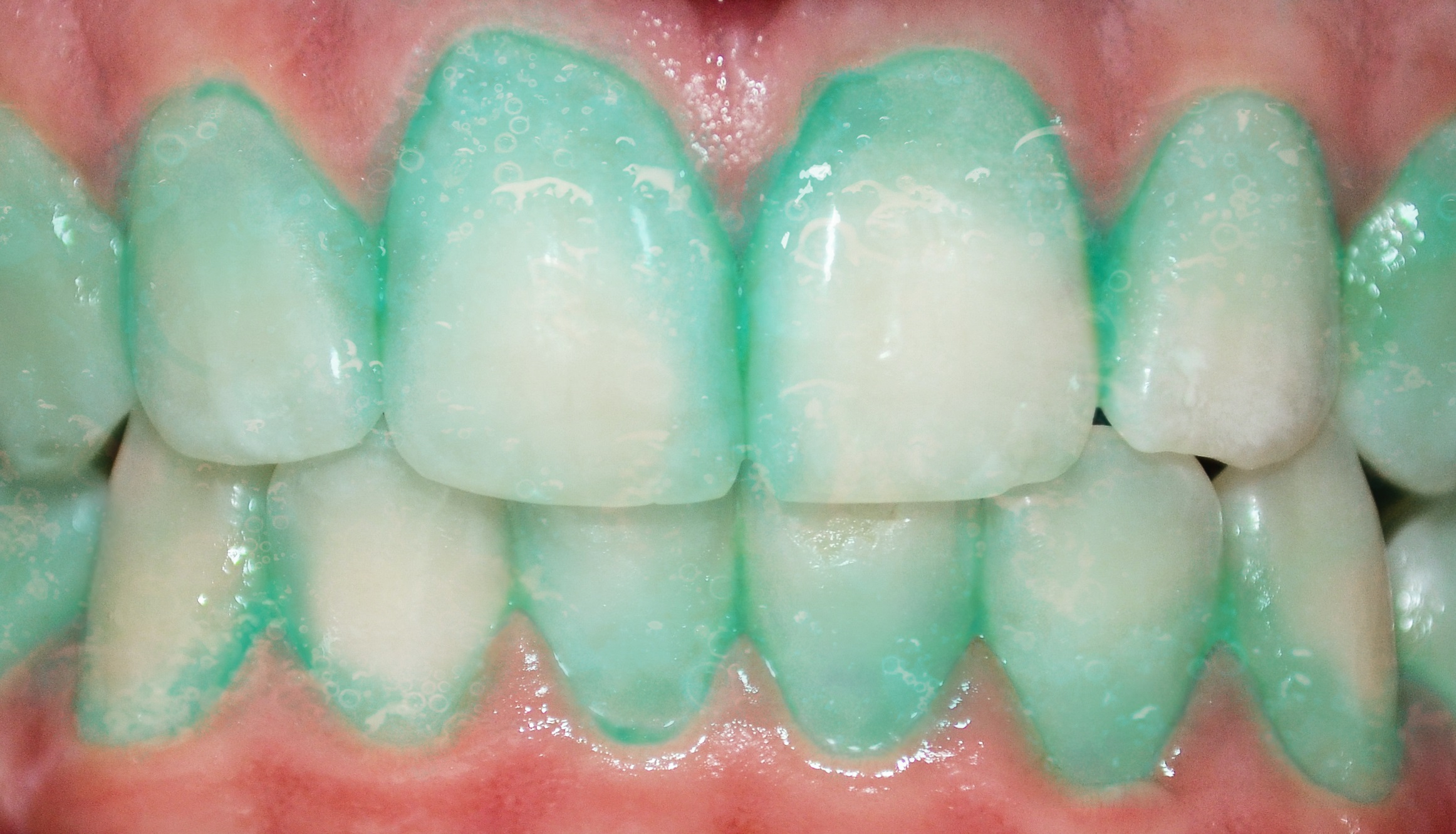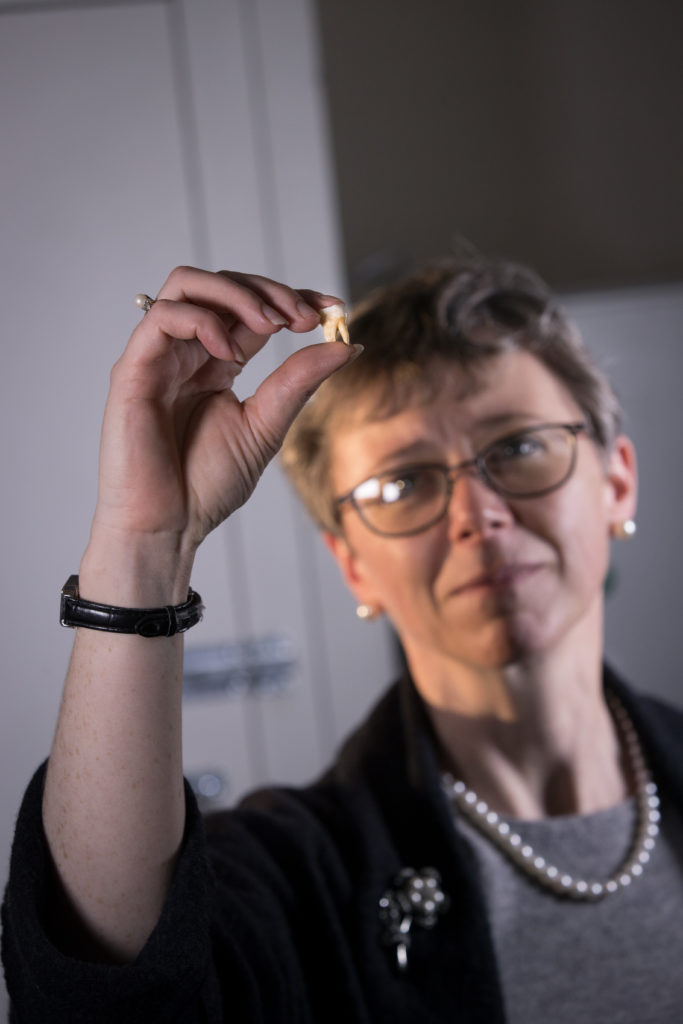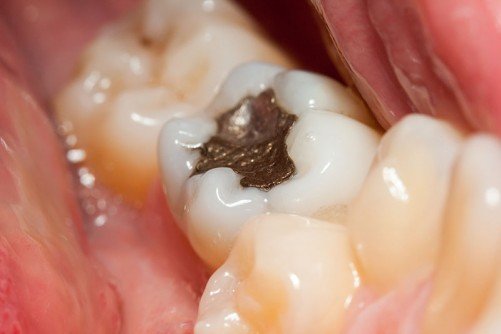Microscopic studies of rodent incisors revealed nano-sized pockets of iron-rich material that form a protective shield, a finding that could improve human dentistry, say researchers in ACS Nano.
Tag: Teeth
Archaeological evidence of seasonal vitamin D deficiency discovered
Rickets ran rife in children following the Industrial Revolution, but University of Otago-led research has found factory work and polluted cities aren’t entirely to blame for the period’s vitamin D deficiencies.
Mouthwash for dogs: water additive with pomegranate helps to keep canine teeth healthy
Periodontal disease is one of the most common canine diseases, affecting at least 80% of dogs aged three and over. Periodontal disease begins as gingivitis, where gums become red and inflamed, and may bleed.
Study: Obstructive sleep apnea tied to weaker bones and teeth in adults
Obstructive sleep apnea may be linked to low bone mineral density in adults, according to University at Buffalo-led research. The findings are crucial for individuals with sleep apnea, as low bone mineral density is an indicator of osteoporosis – a condition in which bones become weak and brittle.
Early humans: Annual cycles in tooth enamel provide insights into life histories
If you take a magnifying glass and a torch and look at your teeth very carefully in the mirror, in places you can spot a pattern of fine, parallel lines running across your teeth. These correspond to the striae of Retzius that mark the growth of our tooth enamel.
Scientists discover what was on the menu of the first dinosaurs
The earliest dinosaurs included carnivorous, omnivorous and herbivorous species, according to a team of University of Bristol palaeobiologists.
How to Prevent ”Wine Teeth” This Holiday
A Rutgers dental expert offers advice for healthy white teeth during the holiday season – and beyond
Chula Researches “Tooth Loss” in Thai People- A Hereditary Condition Caused by Genetic Abnormalities
Chulalongkorn dental research reveals that Thais suffer more tooth loss than their foreign counterparts with 9 out of 100 Thais suffering the condition. One of the most important factors is hereditary gene abnormalities.
Diego bows to ancestral sabretoothed mammal
Morphological analysis of the discovered specimen’s tooth shapes helped to determine that the specimen was one of the earliest nimravids dating back 37 to 40 million years. Sabertoothed nimravids were early members of Carnivoramorpha, but dogs and cats did not evolve from them. Changes in ecosystems may have driven the evolution and rise of nimravids.
Oral Surgery Doesn’t Have to Scare You
Maria Papageorge, chair of the Department of Oral and Maxillofacial Surgery at Tufts University School of Dental Medicine, offers tips for preparing yourself for oral surgery—and for minimizing anxiety, distress, and fear surrounding the process.
Study: Obesity raises the risk of gum disease by inflating growth of bone-destroying cells
Chronic inflammation caused by obesity may trigger the development of cells that break down bone tissue, including the bone that holds teeth in place, according to new University at Buffalo research that sought to improve understanding of the connection between obesity and gum disease.
What Big Teeth You Have: Tooth Root Surface Area Can Determine Primate Size
Researchers have developed formulas that can calculate the body size of a primate based on the root size of its teeth. The formulas could allow researchers to make use of partial and incomplete fossils in order to learn how ancient primates – including human ancestors – interacted with their environment.
Light-Activated Dental Materials – the Latest Dental Innovation of International Standards from Chula
Chula Faculty members joined forces in dental materials science to develop easy-to-use “light-activated dental materials” that meet international standards and help shorten tooth filling time. The secret of these innovative dental materials, made by Thai people, is Acemannan polymer from Aloe Vera that can stimulate the formation of dentin and reduce tooth sensitivity in many dental health products.
Medicaid expansion made many mouths healthier, study finds
As the pandemic’s economic effects drive more people to enroll in Medicaid as safety-net health insurance, a new study suggests that the program’s dental coverage can improve their oral health in ways that help them seek a new job or do better at the one they have.

Ancient tiny teeth reveal first mammals lived more like reptiles
Pioneering analysis of 200 million-year-old teeth belonging to the earliest mammals suggests they functioned like their cold-blooded counterparts – reptiles, leading less active but much longer lives.
Stopping tooth decay before it starts — without killing bacteria
Dental plaque can lead to cavities, but scientists are developing a coating they say dentists could someday apply to teeth to prevent plaque from forming. The researchers will present their results today at the American Chemical Society Fall 2020 Virtual Meeting & Expo.

Using Physics to Improve Root Canal Efficiency
In Physics of Fluids, scientists report calculations with a model of a conical-shaped root canal inside a tooth. A crucial step in this common dental procedure is irrigation, or rinsing, of the root canal cavity with an antibacterial solution, and the researchers used computational fluid dynamics to determine the effect of temperature on the cleaning efficiency: Higher temperatures can, to a point, improve cleansing, but this benefit falls off if the temperature gets too high.

Dental professionals at increased risk of exposure to novel coronavirus
Working from home is one way to curb the spread of the novel coronavirus, but not every profession makes it possible. One example? Dentistry. Dentists, dental hygienists and other dental professionals face an especially high risk of occupational exposure to…

Could This Plaque Identifying Toothpaste Prevent a Heart Attack or Stroke?
For decades, researchers have suggested a link between oral health and inflammatory diseases affecting the entire body – in particular, heart attacks and strokes. Results of a randomized pilot trial of Plaque HD®, the first toothpaste that identifies plaque so that it can be removed with directed brushing, showed that it produced a statistically significant reduction in C-reactive protein, a sensitive marker for future risks of heart attacks and strokes, among those with elevations at baseline.
Green in tooth and claw
Hard plant foods may have made up a larger part of early human ancestors’ diet than currently presumed, according to a new experimental study of modern tooth enamel from Washington University in St. Louis. The results have implications for reconstructing diet, and potentially for our interpretation of the fossil record of human evolution, researchers said.

First adult molars are “living fossils” that hold a health record dating back to the womb, researchers find
Researchers at McMaster University have found that a person’s first permanent molars carry a life-long record of health information dating back to the womb, storing vital information that can connect maternal health to a child’s health, even hundreds of years later.

Scientists show how one cause of weak enamel unfolds on the molecular level
Too-tight proteins impede creation of crystalline enamel structure, which can lead to bad teeth Scientists have shown how a tiny flaw in a protein results in damaged enamel that is prone to decay, according to a new study published in…